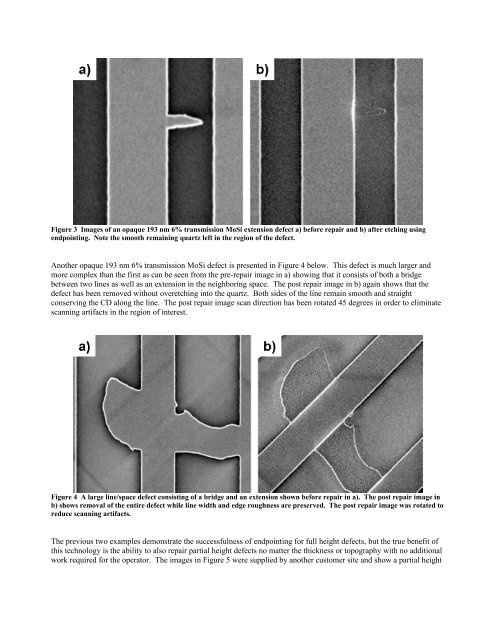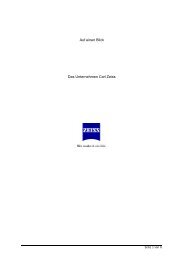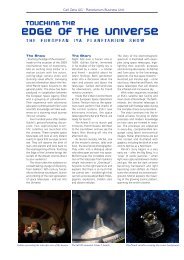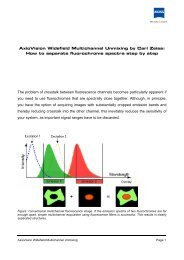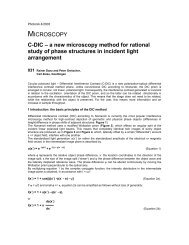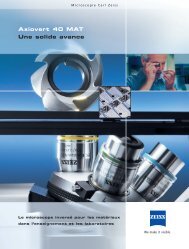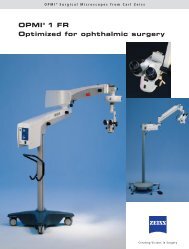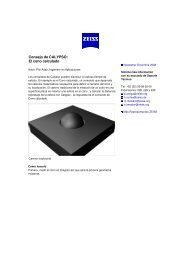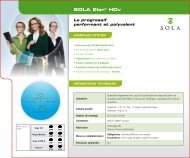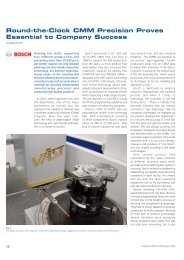Demonstration of the Advantages of Electron Beam ... - Carl Zeiss SMT
Demonstration of the Advantages of Electron Beam ... - Carl Zeiss SMT
Demonstration of the Advantages of Electron Beam ... - Carl Zeiss SMT
Create successful ePaper yourself
Turn your PDF publications into a flip-book with our unique Google optimized e-Paper software.
Figure 3 Images <strong>of</strong> an opaque 193 nm 6% transmission MoSi extension defect a) before repair and b) after etching using<br />
endpointing. Note <strong>the</strong> smooth remaining quartz left in <strong>the</strong> region <strong>of</strong> <strong>the</strong> defect.<br />
Ano<strong>the</strong>r opaque 193 nm 6% transmission MoSi defect is presented in Figure 4 below. This defect is much larger and<br />
more complex than <strong>the</strong> first as can be seen from <strong>the</strong> pre-repair image in a) showing that it consists <strong>of</strong> both a bridge<br />
between two lines as well as an extension in <strong>the</strong> neighboring space. The post repair image in b) again shows that <strong>the</strong><br />
defect has been removed without overetching into <strong>the</strong> quartz. Both sides <strong>of</strong> <strong>the</strong> line remain smooth and straight<br />
conserving <strong>the</strong> CD along <strong>the</strong> line. The post repair image scan direction has been rotated 45 degrees in order to eliminate<br />
scanning artifacts in <strong>the</strong> region <strong>of</strong> interest.<br />
Figure 4 A large line/space defect consisting <strong>of</strong> a bridge and an extension shown before repair in a). The post repair image in<br />
b) shows removal <strong>of</strong> <strong>the</strong> entire defect while line width and edge roughness are preserved. The post repair image was rotated to<br />
reduce scanning artifacts.<br />
The previous two examples demonstrate <strong>the</strong> successfulness <strong>of</strong> endpointing for full height defects, but <strong>the</strong> true benefit <strong>of</strong><br />
this technology is <strong>the</strong> ability to also repair partial height defects no matter <strong>the</strong> thickness or topography with no additional<br />
work required for <strong>the</strong> operator. The images in Figure 5 were supplied by ano<strong>the</strong>r customer site and show a partial height


